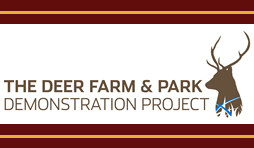Detailed market research undertaken across the UK has indicated that the retail home venison market is growing in value, recording an increase of 10.9% through 2019.
The market research undertaken by Kantar and new attitudinal research by 56 Degree Insight for the Scottish Venison Association and SAOS and funded by the Scottish Government has, for the first time, given an accurate snapshot of how the UK retail venison market is performing and of consumer views in Scotland and the rest of the UK towards buying and eating venison.
The Kantar research found that the UK retail venison market was worth £14.4m in 2019, with a total of 1,221 tonnes sold in the last 12 months. An additional two times that amount of venison is produced, the majority of it from Scotland’s wild deer, which goes to market via other routes – catering, hotels and restaurants and foodservice; independent butchers, farmers markets and mail order; and for export.
Kantar’s research drilled down into the UK grocery retail sector, establishing that sales of primary cuts were worth £7.1m (up by 43%) and burgers and grills some £5.2m. The retail market is dominated by two brands accounting for 59% of sales with Highland Game at #1 and Waitrose own label at #2. In terms of retailer share of venison Waitrose is in front with 33.2% of the market, Sainsbury’s following with 13% and then Morrisons with 10.7%.
The attitudinal research undertaken by 56 Degree Insight highlighted who is eating venison, when and why, and where they are buying it. Headline findings show that 49% of venison is bought from the supermarket; 26% from butchers; 14% from farm shops; and 9% from mail order. Venison shoppers are likely to be older and more affluent, with 13% of those eating venison living in Scotland, and that 30% of all venison is consumed by those aged 65 and over. Also 52% choose venison because of taste; 34% because of high quality; 24% because of health/nutritional qualities; 22% to try something different; and 19% because they can buy it locally. Venison is 5x more likely to be eaten as a treat and 2x more likely to be eaten for health reasons versus other red meat.
Bill Bewsher, Chairman of the Scottish Venison Association, said:
“For years we have lacked detailed information about the venison market and have needed to make certain assumptions based on news reports and other sources about it, how much is sold, and why people buy it. With this new research we are now much better informed, as well as having confirmation that there is healthy growth for venison across the retail sector.
“With these data, processors and other intermediaries can now go to the market with confidence and talk to buyers armed with evidence and hard fact. Venison is performing far better than red meat in general and that is very good news for the wild sector, for deer farmers, and for those who have diversified into deer farming. We are keen to maintain this momentum if we can once the current constraints of the covid-19 crisis and uncertainties surrounding Brexit have past.”


